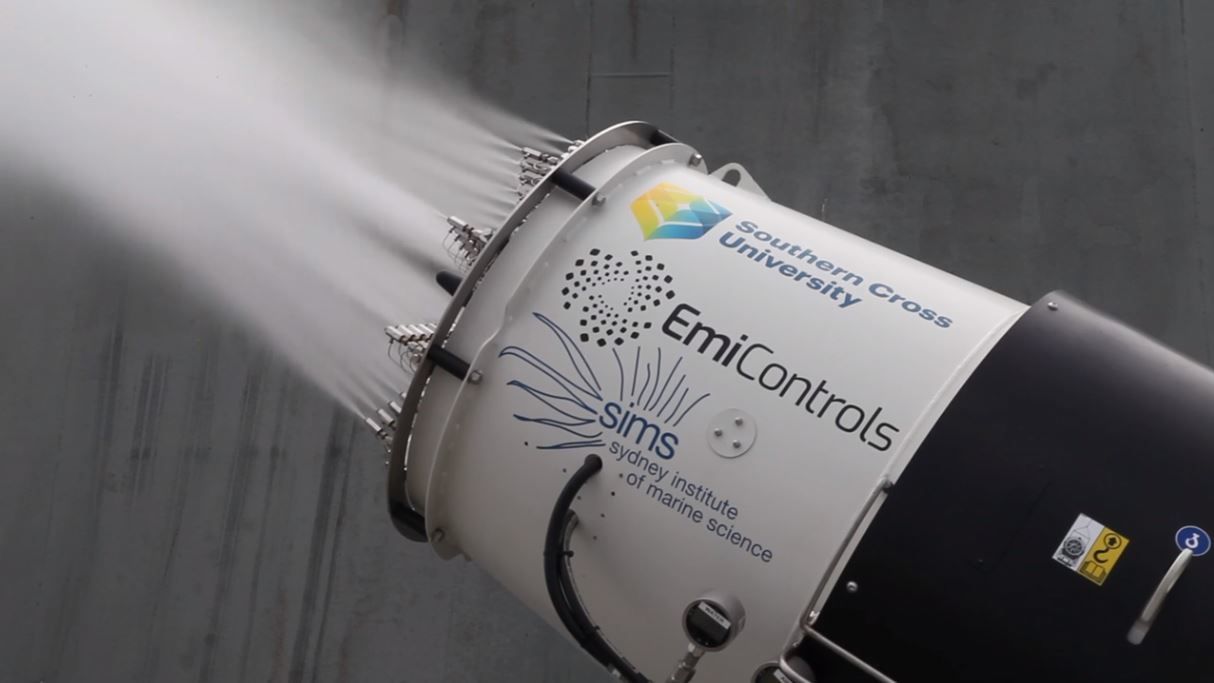Desperate times call for desperate measures, and for scientists contending with a third major bleaching event in five years at Australia’s Great Barrier Reef, such times are very much upon us. In a world first, researchers have conducted a cloud-brightening trial, to see whether reflecting some of the Sun’s energy away could help limit the damage to fragile corals caused by warming oceans.
As environmental scientists grapple with repeated, severe coral bleaching events at the Great Barrier Reef, some inventive ideas are emerging to help restore the natural wonder to full health. Coral bleaching can occur in response to irregular water temperatures that cause the organisms to expel an essential algae they rely on for nutrients and color, with the latest incident only deepening the despair.
“The Great Barrier Reef is undergoing a third mass bleaching event in just five years, and corals were bleaching all around us while we conducted our tests,” says Southern Cross University Senior Lecturer Dr Daniel Harrison. “This was both shocking and heartbreaking, in what should have been an ordinary non-El Nino non-bleaching year. It really emphasizes how little time we have for this research, reminding us of how important this work is.”
Ideas to preserve the reef for future generations in the face of rising global temperatures include using underwater robots that plant additional larvae around the ecosystem, laying protective films over the top, and raising “turbo-charged” coral babies in huge farms.
The type of cloud-seeding technology trialed by the researchers has been in the mix more broadly as a way to mitigate the effects of climate change for years. In general terms, it involves adding tiny particles to the atmosphere, which act as seeds that water vapor can cling to to become droplets and form bright, reflective clouds.
The research team, led by scientists at Sydney Institute of Marine Science and Southern Cross University, took to the waters of the reef with prototype cloud-seeding turbines to conduct some small-scale testing. These work by spraying microscopic sea water droplets into the air that evaporate to leave behind nanoscale sea salt crystals, which serve as seeds for brighter, more reflective clouds.

Alejandro Tagliafico
“We tested the hypothesis at one-tenth of the scale we’re aiming for, using a drone in the atmosphere and a sampling vessel 5 km (3.1 mi) away on the sea surface and showed how we can successfully create hundreds of trillion of these sea salt crystals per second which float up into the atmosphere to bolster the reflectivity of the existing clouds,” Dr Harrison said.
The team hopes to build on these results next year at three times the scale, and then 10 times the scale the following year. The researchers believe this could brighten clouds covering a 20 x 20 km (12 x 12 mi) area, but it’s not as straightforward as deploying the technology on that kind of scale. The jury is out on the safety of cloud-seeding, and how it might impact the environment in other, unforeseen ways.
As part of their research, the scientists will spend four years assessing various environmental impacts, including whether or not the technology could reshape rainfall patterns around the world. In any case, they believe the potential is clear.
“Cloud brightening could potentially protect the entire Great Barrier Reef from coral bleaching in a relatively cost-effective way, buying precious time for longer-term climate change mitigation to lower the stress on this irreplaceable ecosystem,” said Dr Harrison, who added, “in the future this technology might be able to be applied over the Great Barrier Reef to reduce the severity of coral bleaching during marine heat waves, cooling and shading the corals below.”
You can learn more about the project in the video below.
Cloud Brightening project
Source: Southern Cross University, Sydney Institute of Marine Science
Source of Article